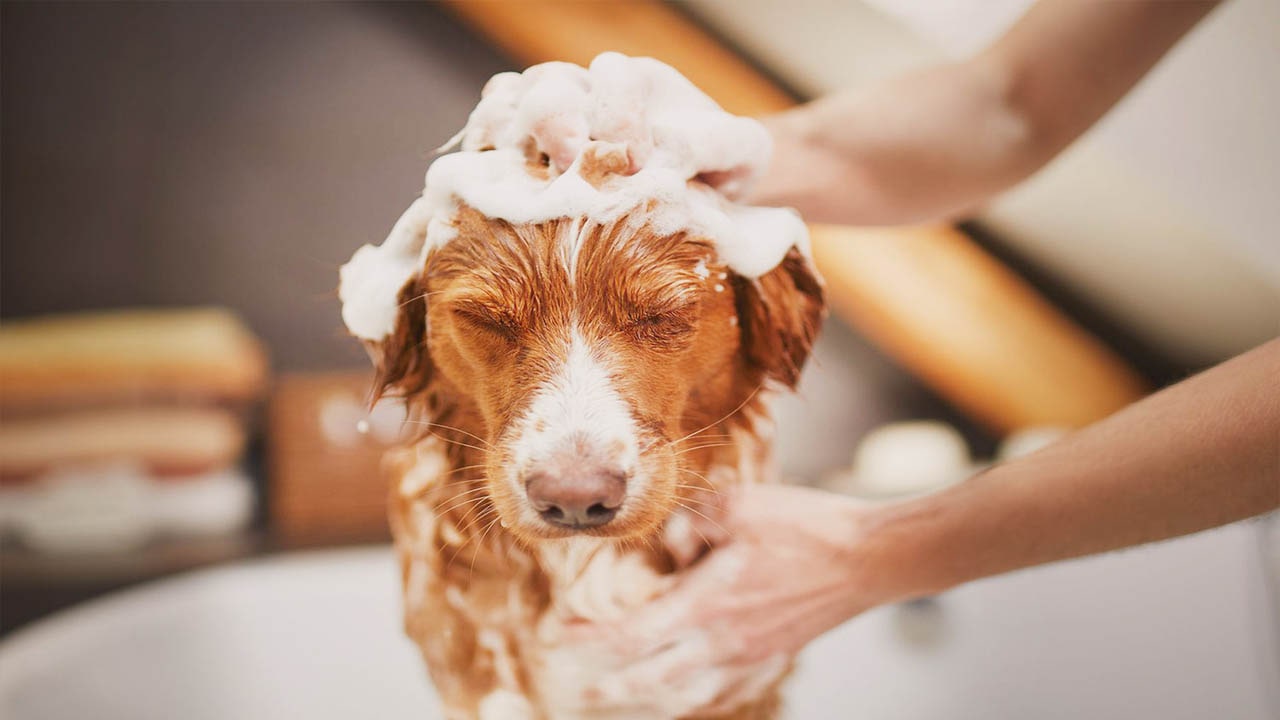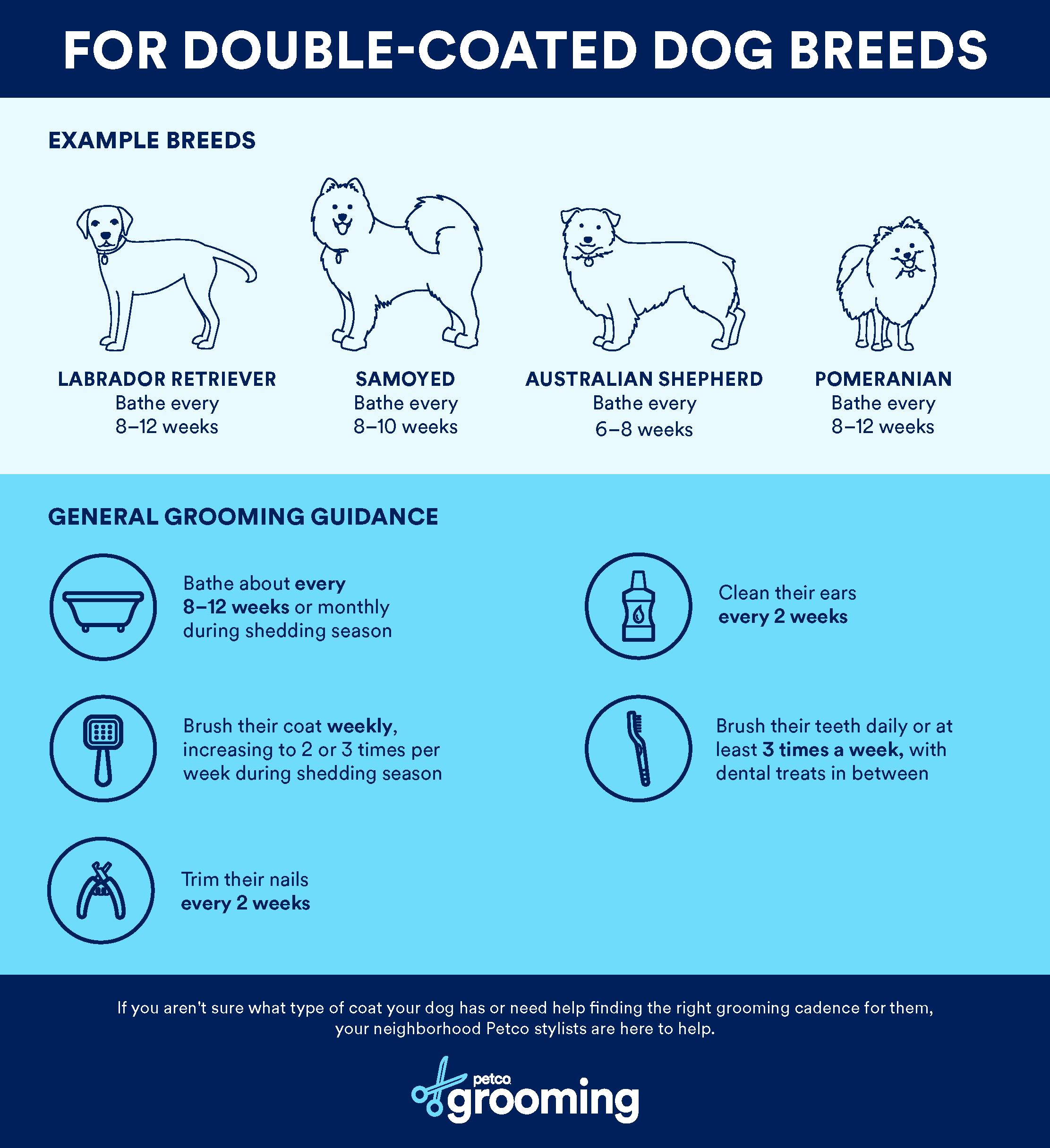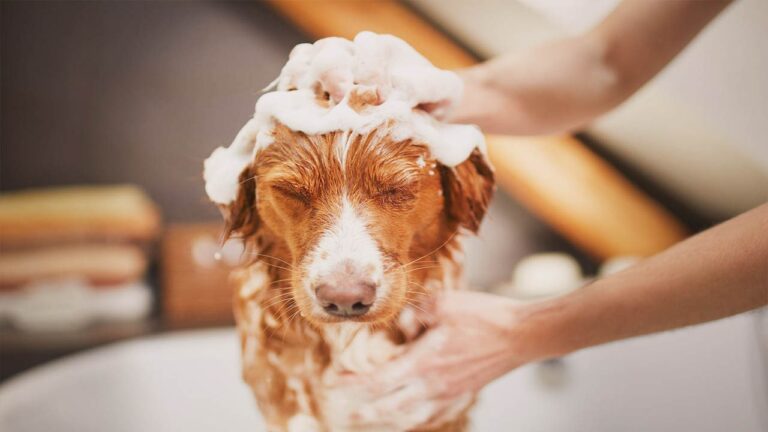During winter, you should bathe your dog every 6-8 weeks to prevent dry skin and protect their natural oils. Bathing too often can strip their skin of essential oils, leading to dryness and irritation. In colder months, it’s important to strike a balance between keeping your dog clean and maintaining their skin’s moisture. Cold weather and indoor heating can cause their skin to become dry and itchy, so regular baths can worsen these issues.

However, regular brushing and occasional spot cleaning can help keep your dog clean and comfortable without over-bathing them. By following a gentle bathing schedule and providing proper coat care, you can keep your dog’s skin healthy throughout the winter season.
How Often Should I Bathe My Dog In Winter
During the winter months, keeping your dog clean and smelling fresh can be a challenge. With the cold weather and shorter days, it’s natural to wonder how often you should bathe your furry friend. In this article, we will discuss the factors to consider and provide frequency recommendations for bathing your dog in winter.

Credit: www.petco.com
Factors To Consider
There are several factors you should take into account when determining how often to bathe your dog in winter:
- Breed and Coat Type: Different breeds and coat types require varying levels of care. Dogs with thick, long coats may need fewer baths compared to those with thin, short coats.
- Level of Activity: If your dog spends a lot of time outdoors during the winter, they may get dirtier more quickly. A more active dog may require more frequent bathing to keep their coat clean.
- Skin and Coat Condition: Dogs with skin conditions, such as allergies or dry skin, may benefit from less frequent bathing to avoid irritation. It’s important to consult with your veterinarian for specific advice regarding your dog’s skin and coat.
- Indoor or Outdoor Lifestyle: Dogs that spend most of their time indoors may not need to be bathed as often as those that spend a lot of time outdoors. Indoor dogs are less likely to get dirty and therefore may require fewer baths.
Frequency Recommendations
The exact frequency of bathing your dog in winter will depend on the above factors. However, as a general guideline, here are some frequency recommendations to consider:
| Breed and Coat Type | Frequency |
|---|---|
| Dogs with thick, long coats | Every 6-8 weeks |
| Dogs with thin, short coats | Every 10-12 weeks |
Remember, these are just general recommendations, and you should adjust them based on your dog’s individual needs. Additionally, always use dog-friendly shampoo and warm water when bathing your pet to ensure their coat and skin stay healthy.
By considering the factors mentioned above and following these recommended bathing frequencies, you can keep your dog clean, comfortable, and happy throughout the winter season.

Credit: www.petco.com
FAQ On How Often Should I Bathe My Dog In Winter
How Often Should I Bathe My Dog In Winter?
In winter, it’s best to limit bathing your dog to once every 2-3 months. Frequent bathing can strip their skin of essential oils and cause dryness. However, if your dog gets visibly dirty or develops an odor, you can bathe them using a gentle, moisturizing shampoo specifically designed for dogs.
Conclusion
Maintaining your dog’s hygiene during winter is essential for their overall health and well-being. By bathing them at the appropriate frequency, which is typically every 6-8 weeks, you can keep their coat clean and prevent skin issues. However, always consider their breed, activity level, and individual needs.
Remember to use lukewarm water and dog-friendly shampoos. Regular grooming and brushing are also vital for their coat’s health. By following these recommendations, you can ensure your furry friend stays fresh and comfortable throughout the winter season.



